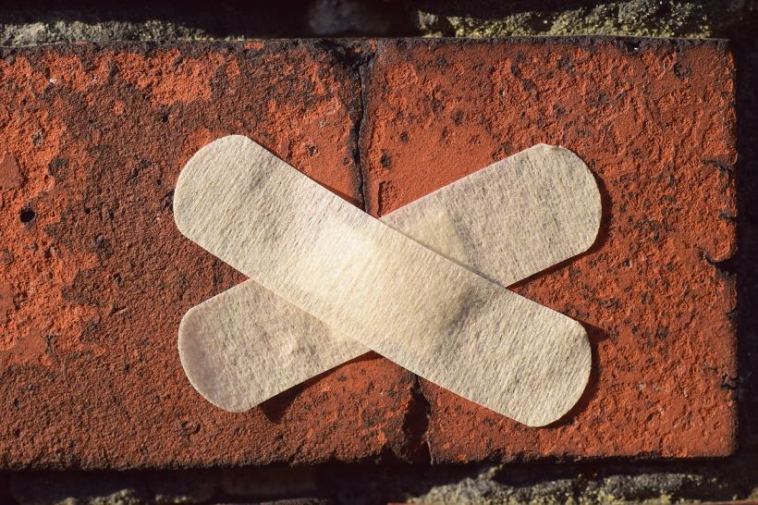- Like
- SHARE
- Digg
- Del
- Tumblr
- VKontakte
- Flattr
- Buffer
- Love This
- Save
- Odnoklassniki
- Meneame
- Blogger
- Amazon
- Yahoo Mail
- Gmail
- AOL
- Newsvine
- HackerNews
- Evernote
- MySpace
- Mail.ru
- Viadeo
- Line
- Comments
- Yummly
- SMS
- Viber
- Telegram
- JOIN
- Skype
- Facebook Messenger
- Kakao
- LiveJournal
- Yammer
- Edgar
- Fintel
- Mix
- Instapaper
- Copy Link
Introduction
Modern wound dressings have been created to help the wound function rather than merely hide it. These are designed to protect from drying out of wounds and to encourage healing. Numerous products are available on the market based on the kind of wound, making choosing a tough process.
Semi-permeable film dressings
The dressings allow water vapor, oxygen, and carbon dioxide to pass through the wound being bacterially impermeable. Previously, films were constructed of derivatives of nylon with sticky frames made of polythene as support, making them occlusive. Initially, nylon-derived bandages were not utilized for heavily exuding wounds.
Semi-permeable foam dressings
These types of dressings are composed of foam, with or without adhesive boundaries. The outer layer’s hydrophobic characteristics protect from liquids while allowing the exchange of gas and water vapor. Depending on the thickness of the incision, foam can absorb various amounts of wound drainage. There are different types of foam like sticky and other treatments. These dressings are appropriate for ulcers in the lower part of the legs and mild to severely exuding wounds, and they are also suggested for granulating wounds.
Hydrogel’s dressing
Hydrogels are insoluble compounds composed of synthetic polymers. Hydrogels have a water content (70-90 percent) benefits the tissues in a wet environment. The soft elastic nature of hydrogels allows for simple application of bandage and removal once the wound has healed without causing any damage. Hydrogels reduce the temperature of the wounds by delivering a relaxing effect on the injured part.
Hydrocolloid dressing
This type of dressing is among the most often used dressings. The dressings are composed of a gel-forming ingredient (carboxymethylcellulose, gelatine, and pectin) and additional components. These are impenetrable to germs, and they may debride wounds and absorb wound emission. It is used for wounds that exude mild to moderate, such as sores, small wounds, and other wounds. It is completely waterproof which helps the wounds to heal faster. They have a unique design that fits perfectly to the wounded area. It is breathable and bio-degradable which makes it easier to recover fast. It is highly absorbent in nature which promotes faster recovery.
Alginate dressing
These types of dressings are composed of salts of sodium and calcium. Alginates produced from seaweed are biodegradable. The capacity to absorb is attained by the development of a hydrophilic gel, which reduces bacterial contamination. Despite the fact that some researches have shown that alginate on bandage slows keratinocyte migration, others have shown that alginates speed healing by stimulating macrophages to generate TNF-, which starts inflammatory signaling.
Bioactive wound dressings
The final form of contemporary dressing is the bioactive form of dressings, which are made from biomaterials that aid in healing. These types of dressings are recognized for their non-toxicity and are produced from sources like natural or artificial like collagen, hyaluronic acid, chitosan, and others. Depending on the nature and kind of wound, these materials have polymers that are employed alone or together. To improve wound healing, bioactive dressings are often combined with growth hormones and antimicrobials.
Conclusion
When it comes to healing your wound, it is crucial to ensure that healing is as quick and effective as possible. To ensure this happens, using the right dressing is crucial.
The type of dressing used for dressing a wound should also depend on various factors, including the type of injury, the size and so forth.
Thankfully, there are many types of dressings to choose from, and hopefully this guide has opened your eyes to your options.
About Theresa Duncan
Originally from Detroit, MI, Theresa has been offering health and fitness advice for the last 30 years while working as an engineer. She decided to turn her passion into a profession, and finds nothing more satisfying than helping others reach their health and fitness goals.

